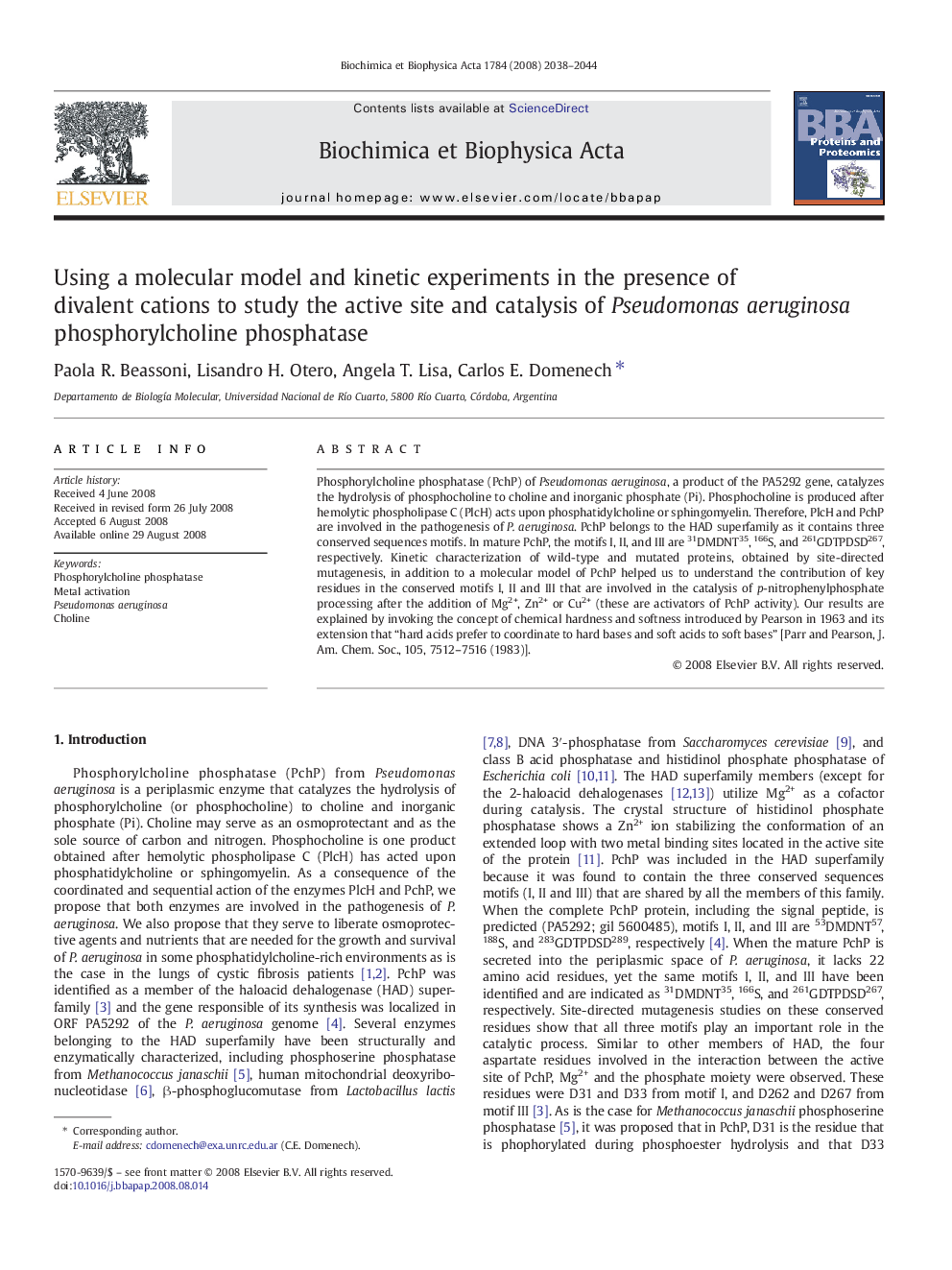| Article ID | Journal | Published Year | Pages | File Type |
|---|---|---|---|---|
| 1180402 | Biochimica et Biophysica Acta (BBA) - Proteins and Proteomics | 2008 | 7 Pages |
Phosphorylcholine phosphatase (PchP) of Pseudomonas aeruginosa, a product of the PA5292 gene, catalyzes the hydrolysis of phosphocholine to choline and inorganic phosphate (Pi). Phosphocholine is produced after hemolytic phospholipase C (PlcH) acts upon phosphatidylcholine or sphingomyelin. Therefore, PlcH and PchP are involved in the pathogenesis of P. aeruginosa. PchP belongs to the HAD superfamily as it contains three conserved sequences motifs. In mature PchP, the motifs I, II, and III are 31DMDNT35, 166S, and 261GDTPDSD267, respectively. Kinetic characterization of wild-type and mutated proteins, obtained by site-directed mutagenesis, in addition to a molecular model of PchP helped us to understand the contribution of key residues in the conserved motifs I, II and III that are involved in the catalysis of p-nitrophenylphosphate processing after the addition of Mg2+, Zn2+ or Cu2+ (these are activators of PchP activity). Our results are explained by invoking the concept of chemical hardness and softness introduced by Pearson in 1963 and its extension that “hard acids prefer to coordinate to hard bases and soft acids to soft bases” [Parr and Pearson, J. Am. Chem. Soc., 105, 7512–7516 (1983)].
